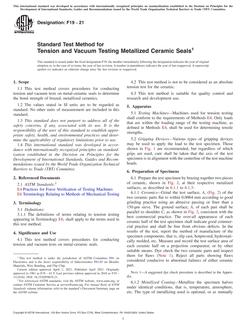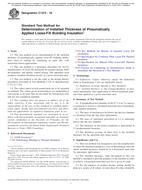1.1 This standard test method covers the determination of slow crack growth (SCG) parameters of advanced ceramics by using constant stress flexural testing in which time to failure of flexure test specimens is determined in four-point flexure as a function of constant applied stress in a given environment at ambient temperature. In addition, test specimen fabrication methods, test stress levels, data collection and analysis, and reporting procedures are addressed. The decrease in time to failure with increasing applied stress in a specified environment is the basis of this test method that enables the evaluation of slow crack growth parameters of a material. The preferred analysis in the present method is based on a power law relationship between crack velocity and applied stress intensity; alternative analysis approaches are also discussed for situations where the power law relationship is not applicable.
Note 1: The test method in this standard is frequently referred to as “static fatigue” or stress-rupture testing (1-3)2 in which the term “fatigue” is used interchangeably with the term “slow crack growth.” To avoid possible confusion with the “fatigue” phenomenon of a material that occurs exclusively under cyclic loading, as defined in Terminology E1823, this test method uses the term “constant stress testing” rather than “static fatigue” testing.
Product Details
- Published:
- 02/01/2017
- Number of Pages:
- 13
- File Size:
- 1 file , 210 KB


